Spotted salamanders (Ambystoma maculatum) live solitary lives under leaf litter on damp forest floors where moist woodlands help them preserve necessary skin moisture. They bide their time during daylight hours in small holes made by animals like the short-tailed shrew, in hollow logs, and spaces left in the soil by rotting logs. They emerge during rain and under the cover of night for sustenance and mating rituals.
The amphibians’ secrecy means the 6- to 8-inch, dark-bodied salamanders with lighter colored bellies and two irregular rows of yellow and/or orange spots are rarely glimpsed in the forested areas they inhabit in the lower two thirds of Missouri.
One of 20 species of salamanders native to the state, spotted salamanders are members of the mole salamander family, so-named because of their undercover lives.
Spotted salamanders remain elusive even to experts like Missouri State Herpetologist Jeff Briggler, who has worked extensively with pond-breeding amphibians throughout his career.
“Approximately 95 percent of spotted salamanders’ lives are spent in the forest. Even though they’re one of the most common salamanders we have, most people have never seen one,” he said. “Outside the breeding season, I’ve only seen a few in my lifetime.”
But during the breeding season, he has seen and captured thousands.
Dance in the Dark
Briggler has witnessed the voiceless spotted salamander’s annual migration to shallow, often seasonal, woodland ponds to breed, a ritual prompted by either a snowmelt or first heavy rains in late February and early March.
“I was out in the forest in the heart of the Ozarks at night. It was raining, and the wind was blowing and when the rain stopped, I could hear the salamanders moving through the leaves toward a nearby breeding wetland.
Male spotted salamanders arrive at ponds first, enter the water, and produce a capsule containing a mass of sperm, called a spermatophore. When females arrive, males wiggle around in what has been romantically referred to as a “dance in the dark.” The swaying and nudging encourages females to take the spermatophore into their cloaca — an orifice underneath the salamander just past its hind legs — in order to fertilize the eggs they will lay. Briggler said he suspects the patterns and colors displayed by males in the nighttime dance are enticing to the females.
In a pond with potentially hundreds of writhing salamanders, this ritual can be a spectacle. However, Briggler warns, woodland pools are often shallow and can be murky after spring rains, obscuring even the dancers from a front row seat.
“You have to be there at the peak time to see it. I’ve been out thousands of nights and often never witnessed the mating ritual due to turbid water,” he said.
Fertilization is accomplished as the females lay 300 to 400 eggs in a jellylike mass that helps protect them from freezing temperatures and predators. In four to eight weeks, depending on temperature, the eggs hatch into tadpolelike creatures, distinguishable by feathery protuberances called gills on both sides of their heads. Before they leave the pond as 2- to 2½-inch adolescents with functioning lungs, these gills are used for respiration.
Spotted salamander larvae feast on small aquatic insects, including mosquito larvae. In turn, they make tasty meals for fish and other aquatic predators sharing their spaces and are themselves cannibalistic if other food is scarce. A very small percentage of larval salamanders make it to adolescence.
Spots and Favored Breeding Spots
“By late July or early August, the salamanders are ready to leave the water,” said Briggler. “They have no spot pattern at first. It starts to form on the tail and moves upward.”
Briggler estimates it takes the spots a couple of months to form, roughly expressed in two irregular lines and often darker up near the head. Spot patterns vary from salamander to salamander.
“In the Bootheel, their spots are brilliantly orange but are lighter in other parts of the state,” Briggler said.
A study on the effects of forest fragmentation on salamanders showed an increase in irregular, nonsymmetrical spot patterns.
“Spotted salamanders rarely venture out into a pasture,” he said. “They are a forest species and need small fishless ponds to reproduce. There is a high likelihood they will return to the same pond every year. Even if the pond is drained, there will be salamanders continuing to return.”
Briggler said he receives calls from homeowners every year about spotted salamander invasions in places where breeding ponds have been eliminated.
“And if trees are bulldozed near breeding ponds, the number of animals going to that pond — now on the edge of a forest — will dramatically decrease.”
Because many of these ponds are temporary bodies, there also is the danger they might dry out before the salamanders mature, and Briggler said, if there isn’t enough moisture on the ground due to lack of snowmelt or rain events, the possibility exists they won’t breed at all that year.
Mature spotted salamanders can live up to 20 years or longer. Their sticky tongues are used to catch earthworms, spiders, snails, slugs, other small invertebrates, and even “pinkies,” or baby mice. A number of woodland creatures make meals of spotted salamanders including snakes, raccoons, skunks, and opossums, though salamanders arenot totally defenseless against their hungry enemies.
“Salamanders release a substance at the base of their tail that is sticky and will gum up the mouth of a snake, in some cases causing it to release the salamander,” said Briggler. “If you handle a lot of salamanders, the sticky substance will dry and peel off your hands like glue.”
Science and Salamanders
Surprisingly, the unassuming spotted salamander is of great interest to researchers for a couple of reasons: its unique symbiosis with a green alga, and its ability to regenerate nearly any of its body part after it has been damaged.
In 1888, a biologist noticed a green hue to the eggs of some spotted salamanders and incorrectly speculated that algae (Oophila amblystomatis) existed in some sort of close relationship to the eggs. But research has shown the alga enters and grows within egg cases and continues to live in the cells of juvenile and adult salamanders. It is the only known example of this type of a cellular relationship in a vertebrate species.
Though tolerated by the salamanders through gene expression, it seems the relationship is quite stressful to the algae, even changing the way they produce energy. Though the exact nature of the relationship is unclear, scientists believe the fact that the two cells are radically changing each other could prove relevant in human genetic research.
Scientists are also quite intrigued with the spotted salamander’s amazing feat of regenerating nearly any part of its body that is damaged.
“Salamanders who have lost tails or other body parts because they were bitten off by predators or due to other injuries can regenerate those parts,” Briggler said, and added that while some lizards can choose to jettison their tails if they are grabbed, spotted salamanders — which are not lizards — only lose their tails to injury.
Salamanders have been known to regenerate tails, jaws, legs, eyes, and even hearts by doing a reshuffling and reassigning of cell specialties at the site of the wound. The intricate process involves sets of undifferentiated cells known as blastemas that can form limbs and organs complete with tissue, bone, muscle, and circulatory systems.
More Than Meets the Eye
If Missouri citizens want to learn more about salamanders on their own, Briggler said it’s legal to possess up to five amphibians, which include some species of salamanders, in Missouri. However, it would not be legal to catch such animals from public lands to sell, breed, or for any commercial use. Briggler recommends checking MDC’s Wildlife Code for specific regulations.
“Because they remain hidden most of the time, spotted salamanders don’t make the greatest pets,” he cautioned. “The reason that a lot of education centers don’t display most salamanders is because of their moisture requirement, cage maintenance, and because salamanders naturally want to stay hidden. But if you drop in a few crickets, they’ll likely come out to eat.”
Spotted salamanders require a moist substrate — 4 to 5 inches of organic potting soil — and a bowl of water. And the bedding needs to be changed regularly.
“There’s still so much we do not know about spotted salamanders, as well as many other smaller salamanders found in Missouri,” Briggler said. “Transmitters are just now getting small enough to track spotted salamanders, so we can learn more about their dispersal capability for better management of this secretive animal.”
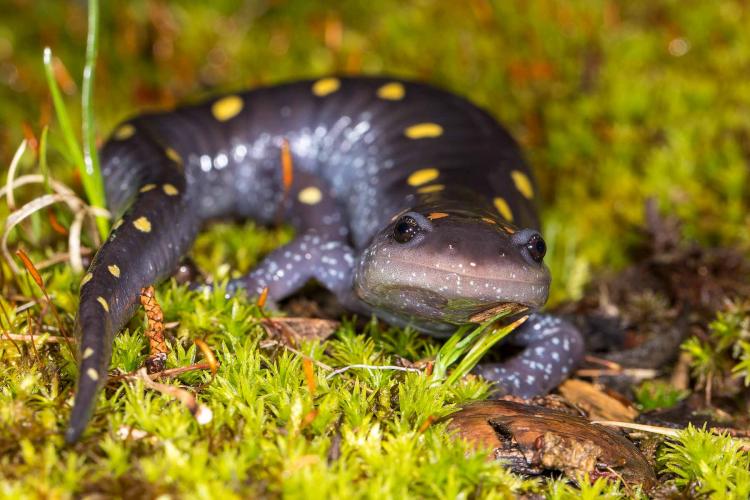


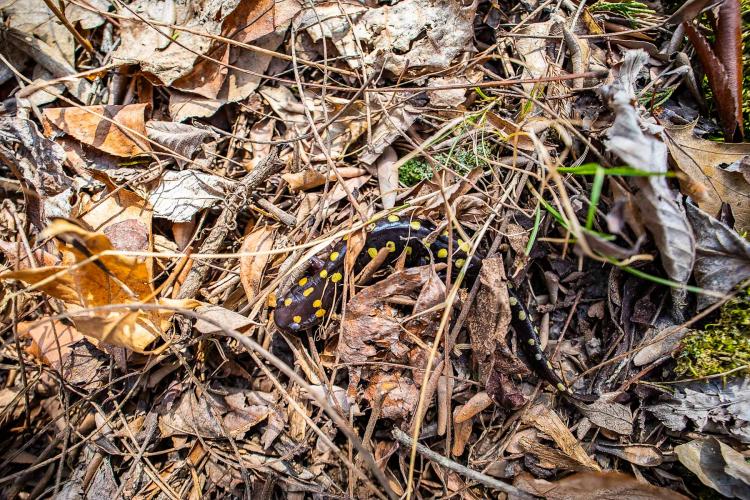

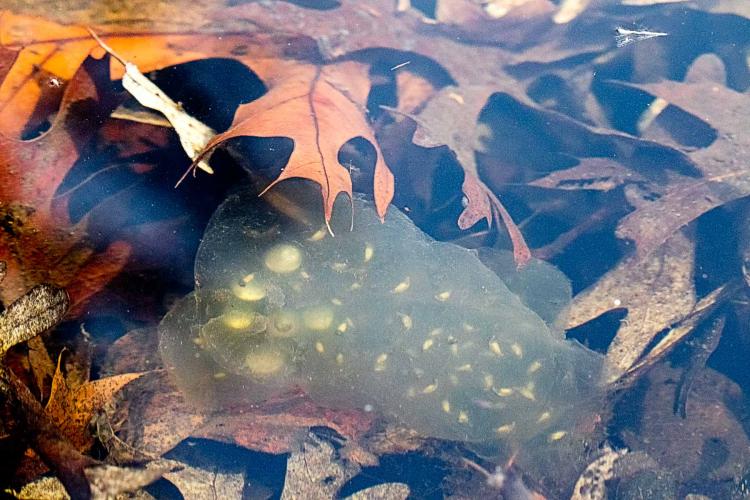


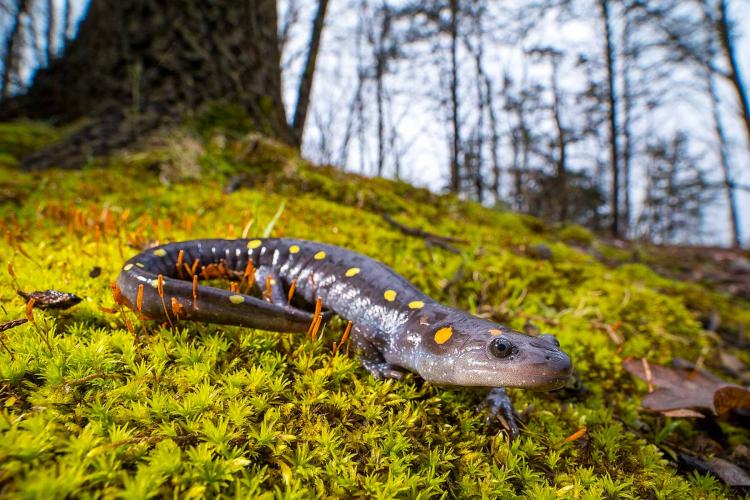
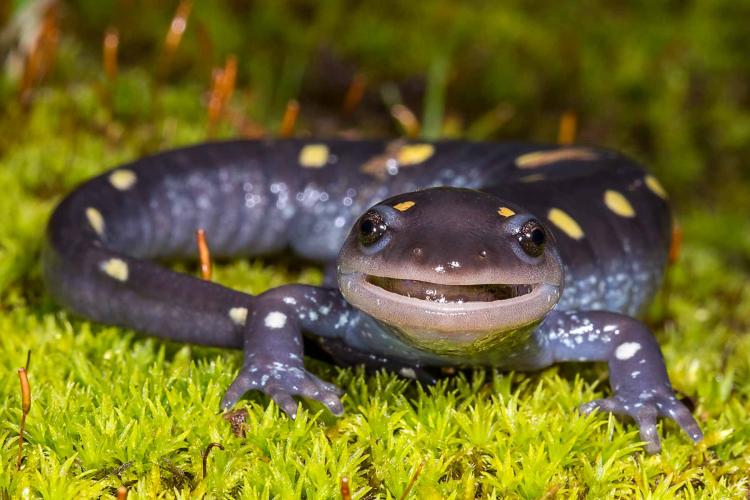


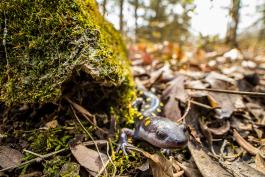

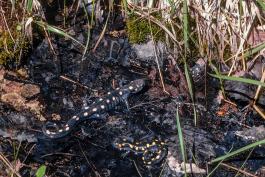


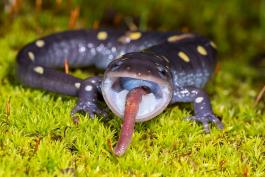

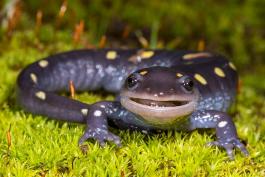
Also In This Issue
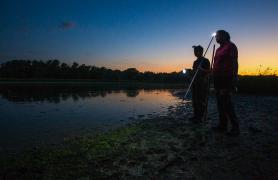

And More...
This Issue's Staff
Associate Editor - Larry Archer
Staff Writer - Bonnie Chasteen
Staff Writer - Heather Feeler
Staff Writer - Kristie Hilgedick
Staff Writer - Joe Jerek
Creative Director - Stephanie Thurber
Art Director - Cliff White
Designer - Les Fortenberry
Designer - Marci Porter
Photographer - Noppadol Paothong
Photographer - David Stonner
Circulation - Laura Scheuler






















